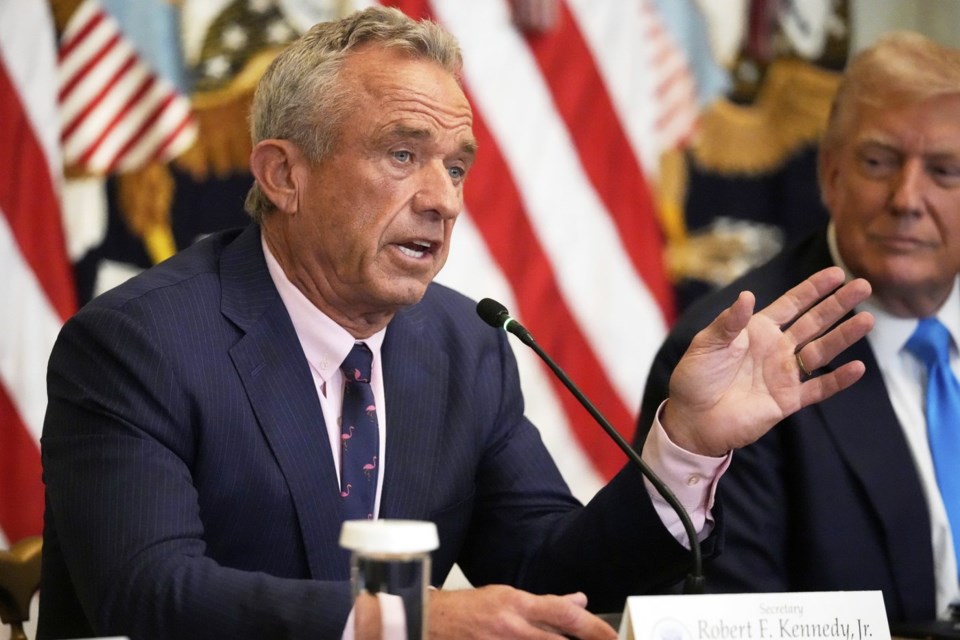WASHINGTON (AP) — So-called mRNA vaccines saved millions of lives during the COVID-19 pandemic — and now scientists are using that Nobel Prize-winning technology to try to develop vaccines and treatments against a long list of diseases including cancer and cystic fibrosis.
But this week, U.S. Health Secretary Robert F. Kennedy Jr., a longtime vaccine critic, canceled $500 million in government-funded research projects to create new mRNA vaccines against respiratory illnesses that might trigger another health emergency.
That dismays infectious disease experts who note that mRNA allows faster production of shots than older vaccine-production methods, buying precious time if another pandemic were to emerge.
Using older technology to target a pandemic flu strain would take 18 months to “make enough vaccine to vaccinate only about one-fourth of the world," said Michael Osterholm of the University of Minnesota, an expert on pandemic preparation. But using mRNA technology “could change that dramatically, such that by the end of the first year, we could vaccinate the world.”
How mRNA technology works
Traditionally, making vaccines required growing viruses or pieces of viruses called proteins — often in giant vats of cells or, like most flu shots, in chicken eggs — and then purifying them. Injecting a small dose as a vaccine trains the body how to recognize when a real infection hits so it's ready to fight back.
But that technology takes a long time. Using mRNA is a faster process.
The “m” stands for messenger, meaning mRNA carries instructions for our bodies to make proteins. Scientists figured out how to harness that natural process by making mRNA in a lab.
They take a snippet of that genetic code that carries instructions for making the protein they want the vaccine to target. Injecting that snippet instructs the body to become its own mini-vaccine factory, making enough copies of the protein for the immune system to recognize and react.
The COVID-19 vaccines aren't perfect
Years of research show protection from COVID-19 vaccines — both the types made with mRNA and a type made with traditional technology — does wane over time. The vaccinations provide the strongest protection against severe infection and death, even if people still become infected.
But that's a common feature with both the coronavirus and flu because both viruses continually mutate. That's the reason we're told to get a flu vaccine every year — using vaccines made with traditional methods, not mRNA.
Today's COVID-19 vaccines made with mRNA by Pfizer and Moderna can be updated more quickly each year than traditional types, an advantage that now has multiple companies developing other vaccines using the technology.
Traditional vaccines aren't the only use for mRNA
Osterholm counts about 15 infectious disease vaccines that could benefit from mRNA technology, but that's not the only potential. Many disease therapies take aim at proteins, making mRNA a potential technique for developing new treatments. Researchers already are testing an mRNA-based therapeutic vaccine for pancreatic cancer. Genetic diseases are another target, such as an experimental inhaled therapy for cystic fibrosis.
___
AP video journalist Nathan Ellgren contributed to this report.
___
The Associated Press Health and Science Department receives support from the Howard Hughes Medical Institute’s Department of Science Education and the Robert Wood Johnson Foundation. The AP is solely responsible for all content.
Lauran Neergaard, The Associated Press



